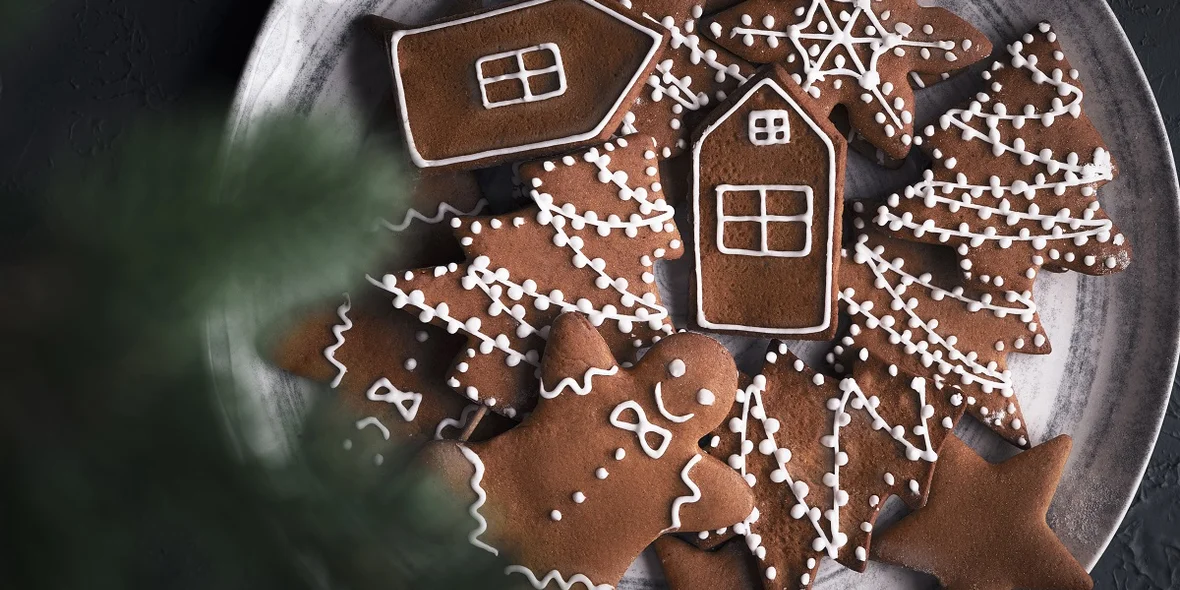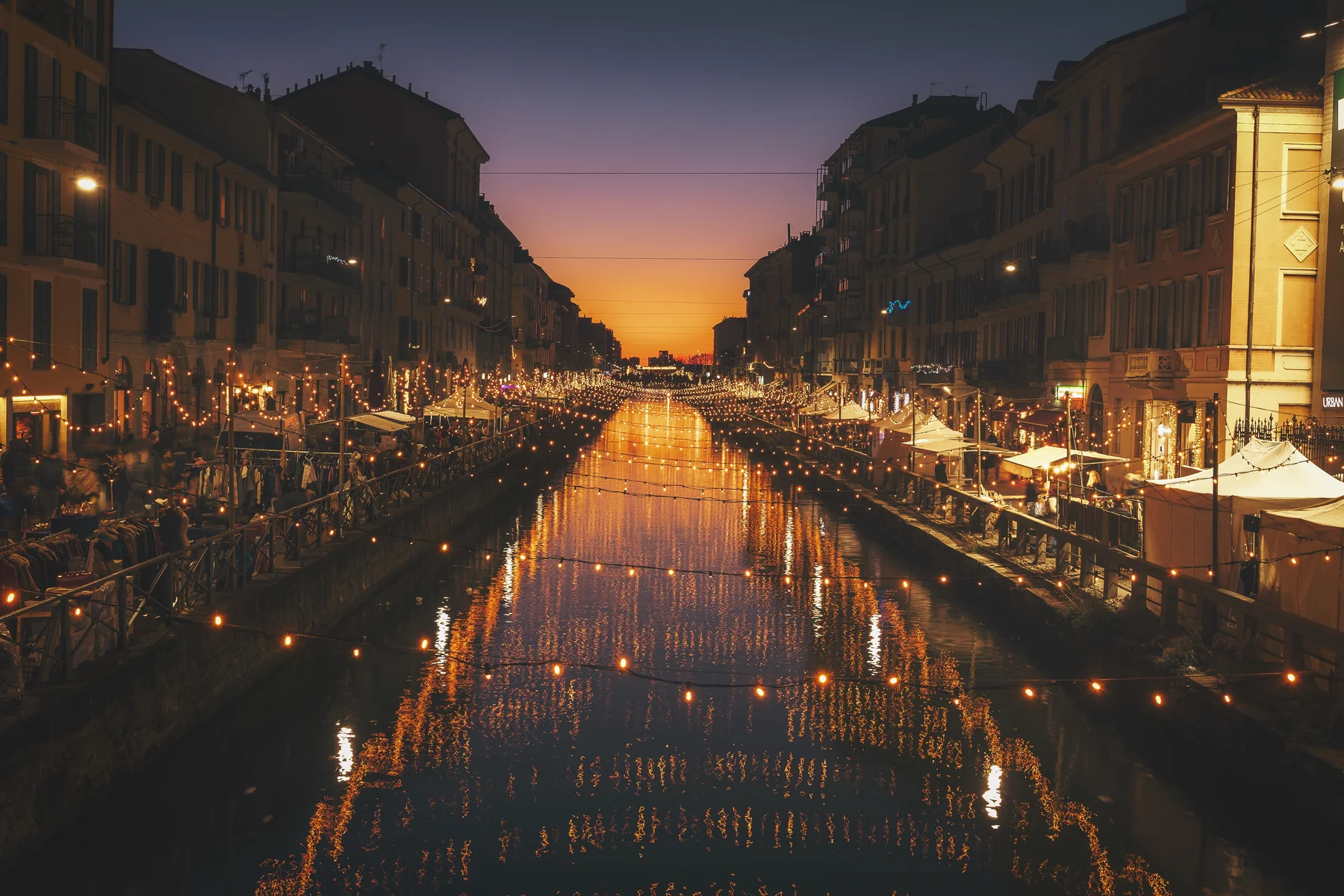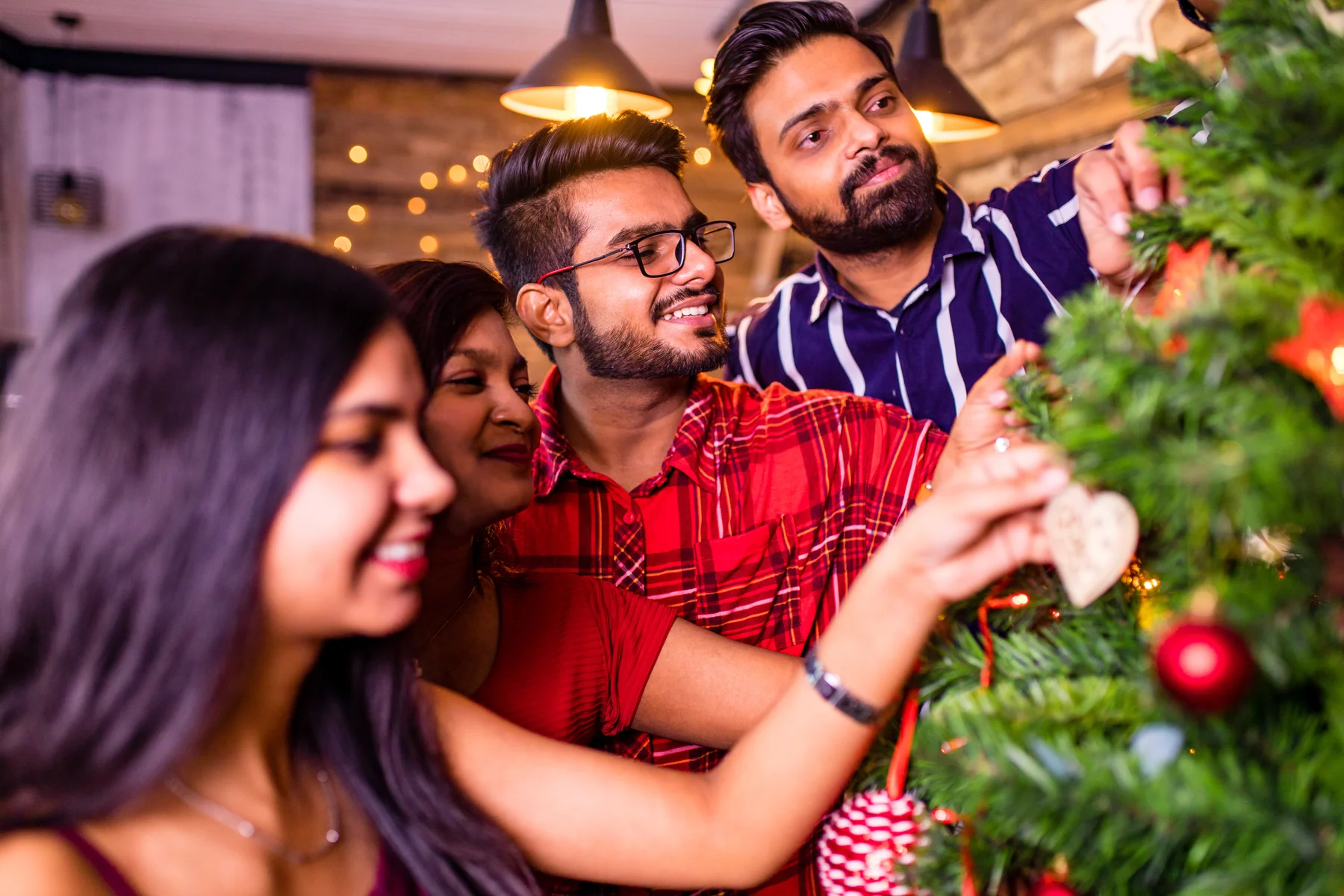
Where on New Year’s Eve Is It Customary to Have a Fist Fight, and Where to Eat 12 Grapes? New Year Traditions Worldwide
Where on New Year’s Eve is it customary to have a fist fight, and where to eat 12 grapes? Residents of which countries throw plates at friends’ doors, and who spend New Year’s night in cemeteries? About New Year traditions around the world (sometimes surprising and wonderful) — read in our material.
In most countries, New Year's holidays begin on December 31, but some celebrate it at other times. Our material will help you learn more about New Year traditions in different countries of the world and, perhaps, take some of the customs for yourself and celebrate the New Year in a truly new way.
How and When Did the Tradition of Celebrating New Year Appear?
The first to celebrate the New Year were the inhabitants of Ancient Babylon — this happened approximately 4000 years ago. At that time, the first day of the new year coincided with the first new moon after the spring equinox day and was celebrated for 11 days, each of which was accompanied by special fertility and purification rituals.
In 46 B.C., the Roman emperor Julius Caesar introduced the Julian calendar and established January 1 as the first day of the year. The Romans celebrated the new year solemnly: they made sacrifices, exchanged gifts, decorated houses with laurel branches, and held feasts.
In medieval Europe, Christian leaders temporarily replaced January 1 with days of greater religious significance — December 25 (the birthday of Jesus) and March 25 (the feast of the Annunciation). However, in 1582, Pope Gregory XIII restored January 1 as New Year’s Day, officially establishing the Gregorian calendar, which is used by most countries to this day.
New Year Traditions in the Modern World
USA
The main New Year tradition in the USA is the dropping of a huge crystal ball on Times Square in New York one minute before midnight. Millions of Americans gather on the streets of Times Square every year or watch the spectacle on television. This tradition originated in 1907, when the owner of the newspaper “The New York Times,” Adolph Ochs, decided to draw attention to the new headquarters of the newspaper.
The current ball weighs more than 5000 kilograms and is illuminated by 32,256 LEDs that can display a palette of more than 16 million bright colors and billions of patterns, creating a kaleidoscope effect.
In addition to the ball drop, Americans sing the song “Auld Lang Syne” (a composition to the verses of Robert Burns), eat black-eyed peas and red cabbage for luck, symbolizing financial well-being.
Spain
December 31 in Spain is a day of sports competitions in honor of Saint Sylvester, whose memorial day falls on New Year’s Eve. More than 200 such 10-kilometer runs are held throughout the country.
When midnight comes, Spaniards follow a unique tradition: they eat exactly 12 grapes — one with each stroke of the clock on New Year’s Eve. Each grape symbolizes luck for each month of the coming year. The tradition originated at the end of the 19th century but was significantly popularized in 1909 thanks to Alicante grape growers who spread this custom to sell surplus harvest.
In large cities, people gather in the main squares (the most famous is Puerta del Sol in Madrid) to eat their grapes together and hand out bottles of cava (local sparkling wine). In supermarkets, before the holiday special small seedless grapes are sold in packs of 12 pieces.
Around one o’clock in the morning, parties begin. Private festive parties in Spain are called “cotillones” — tickets for them must be purchased in advance.
Spaniards traditionally meet the first sunrise of the new year with hot chocolate and crispy churros.
France
New Year’s Eve in France (known as reveillon — “awakening”) is reserved for celebrating with friends, while the Christmas holidays the French usually spend with family. Many residents rush to Paris to watch the countdown to the New Year on the Champs-Élysées or at the foot of the Eiffel Tower.
The main ingredient of New Year celebrations in France is seafood. In addition to traditional oysters, favorites of the French table are lobsters, langoustines, crabs, and scallops, served with champagne.
Scotland
The New Year in Scotland includes an ancient superstition called “First Foot”. According to belief, luck comes if the first person to step into the house after midnight on January 1 is a tall, dark-haired man, especially if he brings food (bread), coal (for warmth), salt, or silver (for wealth). This guarantees abundance in food, warmth, and financial well-being for the whole year.
Scots also hold picturesque fire ceremonies when people march with giant fireballs on long poles. Presumably, these poles symbolize the sun and help cleanse the coming year from negativity.
Germany
A unique New Year ritual in Germany is watching the film “Dinner for One”, a British sketch recorded in 1963 at the studio of North German Television (NDR) in Hamburg. Despite the fact that the film is of British origin, watching it on New Year’s Eve has become an integral part of the German holiday since the 1970s. The sketch is so popular that it has become a cultural phenomenon not only in Germany but has also spread to other German-speaking countries.
Another German tradition — some of the food eaten on New Year’s Eve, Germans leave on plates until midnight so that the coming year is abundant and refrigerators always remain full.
Austria and Southern Germany
In Austria and the southern parts of Germany, there is a tradition of exchanging lucky charms — small souvenirs symbolizing luck and prosperity:
- Marzipan pigs (sweet figures made of almond paste in the form of pink piglets). In Austri,a there is even an expression Schwein gehabt — “to have a piglet”, meaning “to have luck”.
- Four-leaf clover (symbol of luck).
- Horseshoe (image symbolizing protection and luck).
- Chimney and chimney sweep (symbol of goodness and luck, image of purification).
- Mushrooms and fly agarics (symbols of grace in local mythology).
Chocolate coins and lottery tickets are also popular, which can be opened immediately after receiving.

Czech Republic
In Czechia, there is a unique tradition of fortune-telling with an apple. After the festive dinner on New Year people take an apple and cut it in half horizontally (across) to look at the seeds inside:
- If a beautiful, regular star forms inside, this means that the coming year will bring good health and prosperity.
- If a cross-shaped form is visible, this is a warning of possible illnesses or failures in the new year.
- If the apple is wormy inside, this predicts poverty and misfortune.
This tradition dates back to ancient beliefs in the magical power of natural signs.
Switzerland
The Swiss adhere to an unusual tradition: at midnight, they drop drops of melted butter on the floor, which is believed to bring luck and wealth in the coming year. This tradition has ancient roots and supposedly attracts prosperity and abundance.
In Lausanne, a sacred fire burns on the bell tower of the Gothic cathedral, creating an impressive spectacle.
In Rheinfelden, there is a medieval tradition of Fountain Singing (s, dating back to 1541. Men in black tailcoats and top hats pass by each of the six city fountains and sing New Year songs, which are believed to bring blessings to the city. The tradition dates back to attempts to protect against the plague.
Denmark
In Denmark, at midnight, people jump off chairs in unison and jump up, symbolizing a jump forward into the new year for luck.
The Danes have another unusual tradition: on New Year’s Eve, it is customary in the country to throw plates at the doors of friends and neighbors. The tradition says that the more broken dishes you collect on the threshold of your house, the more friends you have and the happier the coming year will be.
Bulgaria
In Bulgaria, New Year’s night is filled with romance and intrigue. In all houses, the lights are turned off for three minutes — this is a special time for kisses when you can confess your feelings or kiss someone you previously lacked the courage to kiss. This custom allows lovers to open their hearts in the dark.
On January 1, Bulgarian children go to congratulate adults with special cornel sticks. Children gently tap the sticks against each other, after which they receive long-awaited gifts and sweets. This tradition symbolizes the transfer of energy and blessing from the younger generation to the older and originates from ancient fertility rituals.
Hungary
In Hungary, celebrating the New Year is a grandiose sound performance. Even before midnight, the streets and houses are filled with the sounds of pipes, whistles, and drums. According to local belief, evil spirits and harmful forces cannot stand loud sounds, so Hungarians arrange a real musical show.
The goal of this unusual ritual is not only to create a festive mood, but also to completely cleanse cities and houses from unclean forces. The louder and more varied the sounds (from drums to horns), the more effectively, according to locals, the expulsion of evil spirits occurs.
Romania
In Romania, there are several main traditions of celebrating the New Year. In the morning of the new year, children knock on neighbors’ doors and read the poem Plugusorul (plow) — an ancient fertility ritual that should bring health and luck to every family. Then, in the afternoon, the holiday turns into something like a street party where people in special costumes (often animals) perform dances and march through the streets.
Ireland
To drive away evil spirits, families in Ireland bang loaves of Christmas bread (barnbrack — spicy bread with dried fruits) against walls and doors throughout the house. This action symbolizes the expulsion of negativity and attraction of positive energy.
In addition, in Ireland, it is customary for unmarried girls to sleep with mistletoe under their pillow on New Year’s night. As locals believe, sleeping with this plant helps women find their future husbands and meet true love.
Greece
On New Year’s Eve, Greeks usually smash a ripe pomegranate against the door of their house — it is believed that the number of scattered pomegranate seeds is directly related to the amount of coming luck and prosperity. The fact is that in modern Greece, the pomegranate is associated with luck, fertility, and abundance due to its meaning in ancient Greek mythology, where it is a symbol of eternal life.
After the church service on New Year in Greece, there is a tradition of hanging an onion outside the door. It is believed that the onion symbolizes fertility and growth due to its ability to sprout on its own at any time of the year.

Turkey
As soon as the bell strikes midnight, in Turkey it is customary to sprinkle salt on the threshold of the house. It is believed that this brings peace, tranquility, and luck to the house or business. Salt is used as a symbol of protection and purity.
Finland
In Finland, there is an ancient tradition of predicting the future by melting tin — the process is called kuninkaansilakka. It is done like this: molten tin is poured into a container with cold water, and after the metal hardens and takes some shape, Finns interpret what it might mean. For example, a heart or ring means wedding or romance, a ship predicts travel, a fish — abundance, a book — knowledge, a horse — mobility. This custom is part of a broader tradition of fortune-telling through various elements.
Sweden
In Sweden, on New Year it is customary to eat sweet buns with caramel and almonds, as well as organize festive dances and ceremonial dinners. Swedes believe in the power of the festive table and gatherings with friends.
Brazil
In Brazil, people usually go to the beach to celebrate the New Year, as it is the height of summer there. Immediately after midnight, you need to jump over seven waves in the ocean, making seven wishes (one wish per wave). This tradition is associated with the veneration of the goddess of water and seas — Yemanjá (Iemanjá), revered in the candomblé religious culture.
In Brazil, as in Ecuador, Bolivia, and Venezuela, it is considered very important to wear special underwear on New Year’s Eve. The most popular colors:
- Red — brings love and passion in the New Year.
- Yellow — attracts financial well-being and money.
Also in Brazil, certain foods are eaten to attract luck in the coming year. Seven is a lucky number on New Year’s Eve, so seven pomegranate seeds are eaten so that the wallet is full, and seven grapes ensure abundance in all areas of life.
Ecuador
In Ecuador New Year is a time when failures and grievances of the previous year are actively forgotten, symbolizing a reboot and healing. In honor of this, stuffed figures (viejo) of various characters are created in the country, from popular cartoon heroes to real political figures and public persons. Then the viejos are filled with firecrackers and explosives and burned with a loud bang right on the streets. The flame symbolizes cleansing from the old and bad.
Mexico
In Mexico, on New Year there are bright and joyful traditions:
- Año Viejo (Old Year) — creation of large dolls and stuffed figures filled with fireworks, which are burned exactly at midnight for the symbolic getting rid of the old year.
- Twelve grapes — like in Spain, Mexicans eat 12 grapes as the clock strikes, each of which represents a wish for one of the 12 months.
- Red and yellow underwear — red color attracts love, yellow — financial well-being.
- Walk with an empty suitcase — walking around the block with an empty suitcase symbolizes the desire to travel in the new year.
- Cleaning the house before midnight — throwing out trash and cleaning the premises a few hours before midnight symbolizes getting rid of negative energy.
- Lentil breakfast — lentils symbolize coins and money, so they are eaten for financial prosperity.
- Throwing coins into the house — after midnight, people throw coins into the house, attracting wealth.
Chile
Some families in Chile prefer to light candles and spend the night in cemeteries with their loved ones on New Year’s night. Locals believe that the souls of deceased friends and relatives come to walk exactly on this night and want to renew the connection with the living. This is a touching tradition of commemorating ancestors.
Colombia
On New Year’s Eve, in Colombian families, there is a tradition called agüero (omen):
- Three potatoes are placed under the bed of each family member: one peeled, one unpeeled, and the last one partially peeled.
- At midnight, each person with closed eyes grabs one of them.
- Depending on the chosen potato, one can expect either luck (peeled), financial difficulties (unpeeled), or a combination of both (partially peeled).
Also, during the New Year celebration, Colombians often carry an empty suitcase around the block or street. This tradition should ensure many travels and adventures in the coming year.
Peru
One of the most unusual New Year traditions — the tradition of the indigenous peoples of Peru is called “Takanakuy” (in Quechua, literally means “to beat each other”). The annual festival is usually held on December 25 in the province of Chucho (in remote areas of Machise) and includes dances, parades, and friendly fist fights.
It is believed that this ancient tradition is intended to resolve accumulated disputes and conflicts of the previous year between community members so that everyone can start the New Year with a clean slate, without grievances and old grudges. This is a way of symbolic cleansing of the community before the new cycle.
Cuba
Residents of Cuba meet the New Year with a special mood for cleansing. Before the holiday, they fill all available containers with water: cups, basins, pots, buckets, and watering cans. The amount of water symbolizes the number of sins that, in the person’s opinion, he committed over the past year.
After the clock strikes midnight, this water is solemnly poured over the thresholds of houses in all directions — through entrance doors, windows, and even balconies. This ritual means complete liberation from sins and negative experiences, as well as readiness to start the new year with a clean slate and positive energy.
Philippines
On New Year in the Philippines, everything round is in fashion — the round shape symbolizes money, coins, and material well-being. People eat as much round food as possible (buns, fruits, round cakes), wear polka dots or with round patterns, and fill pockets with coins to attract wealth.
Among other Filipino traditions:
- Encouraging children to jump high at midnight (to help them grow taller and become more successful).
- Eating sticky rice (palitaw) to strengthen family ties and cohesion.
Japan
On the eve of the New Year in Japan, it is customary to do a general cleaning — Oosouji (大掃除), which literally means “Big Cleaning”. This is not just cleaning: the tradition means cleansing the space from unnecessary things, worries, and negative energy of the previous year, preparing the house for the arrival of the New Year deities.
Also on December 31, the Japanese eat toshikoshi soba — a dish of buckwheat noodles. Eating it symbolizes literally parting with the old year: the long noodles represent long life, and eating them means breaking with the past. And at the beginning of January in Japan, it is customary to prepare and eat rice cakes, mochi, a traditional New Year treat symbolizing the sweetness of the coming year.
Another important ritual performed in Japan on New Year’s Eve is called Joya no Kane (New Year’s Eve bell ringing). During it Buddhist temples throughout the country ring the bell exactly 108 times. The number 108 in Buddhism represents 108 earthly passions (kleshas), which are considered the root cause of all human suffering. With each bell strike, people seem to cleanse themselves of these 108 passions and sins.
Many Japanese on New Year's change their usual clothes for a traditional kimono and then visit shrines or temples (hatsumōde) for prayers and worship.
The first sunrise of the new year (hatsuhinode) is extremely important in Japanese culture. Many people specially go to places with a good view of the horizon to see the first sun rays and meet the new day together with the sunrise.
Which Countries Follow a Non-Standard New Year Schedule?
There are states that follow a different schedule when celebrating New Year. Let’s see which countries these are.
Thailand
The traditional New Year in Thailand takes place from April 13 to 15 and is called Songkran (water festival). At this time one of the most important events in the Buddhist calendar is celebrated throughout the country. Songkran takes place in the hottest time of the year in Thailand, and it is celebrated by massively pouring water on each other (which symbolizes cleansing from bad luck and sins of the previous year).
China and East Asian Countries
In China and other Asian countries (including Vietnam, Korea, and Indonesia) they celebrate Lunar New Year, also known as Spring Festival or Tet. The date of the Lunar New Year changes every year depending on the lunar cycle.
Vietnam
In Vietnam there is a unique tradition of honoring elders, which is especially evident during the New Year feast. It is believed that the wisdom and life experience of older people magically spread to all fellow diners.
Israel and Jewish Diasporas
Jews around the world celebrate the onset of the new year on Rosh Hashanah (literally “head of the year”), which falls in September or October according to the Gregorian calendar.
Iran and Central Asian Countries
Nowruz (translated from Persian means “new day”) is the beginning of the first month of the Iranian solar calendar, which starts on the day of the spring equinox and is celebrated around March 21 each year according to the Gregorian calendar.
Ethiopia
New Year in Ethiopia is called Enkutatash (in Amharic “day of offering jewels”) and is celebrated on September 11 according to the Gregorian calendar.
India
The Hindu lunar holiday Diwali (festival of lights) is a five-day festival of light dedicated to celebrating the victory of good over evil and the beginning of a new life.

Summary
New Year traditions from around the world reflect deep beliefs, values and hopes of each culture. Each custom carries the desire to start the year with a clean slate, attract luck, health and prosperity.
Celebrate New Year respecting and understanding the traditions of other cultures. This is not only interesting and educational, but also helps us better understand each other and appreciate the diversity of our world.
Frequently asked questions
When and where did people first start celebrating New Year's Eve?
Why is January 1 considered the beginning of a new year?
What are some of the most unusual New Year's Eve traditions in the world?
What countries celebrate New Year's Eve at other times?
Why do some countries eat certain foods on New Year's Eve?
What is the most common New Year's tradition in the world?
Author
I am responsible for editorial work. I write expert interviews and guides.




















